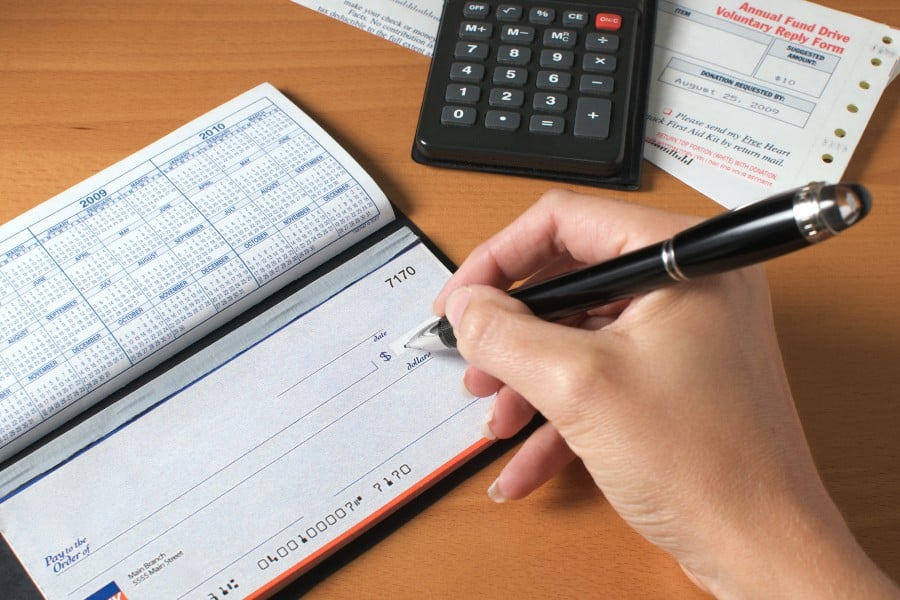I’ll walk you through how to open a sole proprietorship bank account, from registering your business and finding a bank to opening and funding the account. Setting up a bank account for a sole proprietorship is an important step in your business journey because having a dedicated bank account will give your business credibility with your clients; they will be making checks payable to your business name instead of your personal name.
I’ll go over each step and share some tips to streamline the process. I’ll also compare some banks that are a good fit for sole proprietors and highlight some of their products to help you get started.
Step 1: Register Your Business
To open a business bank account, you need to register with the state or local authorities where your business is located. Your business does not have documentation like an LLC or corporation, so this registration is an alternative way for the state to certify your business name and for the bank to verify you.
Most sole proprietors operate under a name other than their own. For instance, instead of naming a painting company after yourself, you may choose to name it something like Premier Painting. You will need permission from the state to operate under that name. You can still file your taxes using your Social Security number after registering with the state as a sole proprietor.
The certificate you’ll receive has many names, as different states have different titles for it. Some common names are a Certificate of Assumed Business Name, a Doing Business As (DBA) certificate, a Fictitious Name Certificate, an Assumed Name Certificate, or a Trade Name Certificate.
Step 2: Gather the Required Documents
To open a sole proprietorship account you will need your personal information and information about your business. Every bank has slightly different requirements but here is a basic list of the necessary documents:
- Full legal name of the individual opening the account
- Address (for the individual and the business)
- Government-issued identification: This will need to be a driver’s license, a state-issued identification card, or a current passport
- Social Security Number: Sole proprietors will need to provide their Social Security number since most will operate under that number
- Certificate of Assumed Business Name or Doing Business As (DBA): This document proves the sole proprietor has registered the business and has the right to use the chosen business name instead of the owner’s legal name
- Business license if required by the local authorities
- Employee Identification Number (EIN) if you have one
Step 3: Find a Bank That Fits Your Needs
As a sole proprietor, you’ll find many options when it comes to banking. Analyzing your business model will help determine which bank is best for your business.
There are two types of banks to choose from:
- A traditional bank generally has a physical location. This is a great fit for businesses needing an in-person banking experience or those collecting a large amount of cash or checks since they’ll need to visit a branch from time to time. It also offers online services for those who prefer electronic banking.
- An online-only bank does not have physical locations. It serves a community of business owners that operate in a digital environment. This is a great fit for a business that generally collects its payments electronically and can do most of its daily banking functions using online banking.
A traditional bank can serve multiple purposes, while an online-only business model is limited to the kind of customers it can serve. Once you have the bank you want to use in mind, take some time to review its fee schedule.
Step 4: Choose the Best Bank Account
Setting up a bank account for a sole proprietorship requires a bit of research. When you start this process, you’ll find plenty of accounts to choose from. Finding the best small business checking account is an important step in managing your business finances properly.
Here are some questions to consider when researching the accounts available at your bank of choice:
- Does the account earn interest?
- Will there be monthly maintenance fees?
- Is there a minimum balance requirement if the account falls below a certain amount?
- Will I need international banking services, and if so, what are the foreign transaction fees, currency conversion fees, and incoming/outgoing wire fees?
- Will I be charged for ATM withdrawals?
- Do I have to pay a fee to make a cash deposit at the branch?
- Are there limits on how many transactions I’m allowed to do in a statement cycle?
- What additional services will I need to add to have all the tools I need?
The chart below shows three options available to sole proprietors. Found is an online-only banking model, while U.S. Bank and Chase are traditional banks with branches.
Account Name | Monthly Fee | Free Monthly Transactions | Free Cash Deposit Limit | ||
|---|---|---|---|---|---|
 | Business Checking | $0 | Unlimited | N/A | No Limit |
Visit Found
Found is a financial technology (fintech) company, not a bank. Banking services are provided by Piermont Bank, Member FDIC. Deposits held are insured up to $250,000 per depositor for each account ownership category.
| |||||
 | Business Essentials Checking | $0 | Unlimited digital transactions and 25 free teller transactions | N/A | 25 transactions per month |
 | Business Complete Banking | $15 (waivable) | Unlimited debit card and Chase ATM transactions + 20 teller transactions | N/A | $5,000 maximum per statement cycle |
Step 5: Open and Fund Your New Account
When all your research is done, you’re ready to open the account. If you choose a traditional bank, then you can open the account by either visiting the local branch or going online if the provider has that capability. For an online-only model, you will need to open the account by visiting its website.
Ensure you have all your documents available at the time of opening; for an online bank, you will also need the capability to image these documents so that they can be uploaded to the bank’s portal.
It’s a good idea to fund the account at the time you open it. If you open your account without making a deposit, you run the risk of ending up with a dormant bank account or the account being closed at the next statement cycle. An account with activity will stay active and ready for you to use. Also, if your account requires a minimum balance, consider depositing that amount or more to avoid a fee when the cycle closes.
Advantages of Opening a Sole Proprietorship Bank Account
When running a business as a sole proprietor, it’s highly recommended that you open a business bank account. If you’re using a name other than your own, you will definitely need a business account. Banks are unable to deposit business checks made out to a company into a personal account; due to banking regulations, the check will need to be deposited into an account with a matching title.
There are many other reasons to open a business account strictly dedicated to your business transactions. Here are some additional benefits:
- Keeps personal and business finances separate
- Allows you to see the financial health of your business with the touch of a button
- Enables you to build a better working relationship with your bank
- Lends credibility to your business in the eyes of your customers
- Enables you to build business credit
- Opens the door for upgraded business banking tools
- Simplifies the job of your bookkeeper
- Makes tax season much easier
Additional Resources for Sole Proprietors
There are many challenges unique to running a sole proprietorship. Fit Small Business has several guides to help you navigate those challenges. Here is a list of some of our articles geared explicitly toward sole proprietors:
- Examples of sole proprietorships: Our guide on what a sole proprietorship is includes examples of business types that make good sole proprietor companies.
- Benefits and drawbacks: We’ll help you determine whether a sole proprietorship is the right choice for your business in our article on sole proprietorship pros and cons.
- Single-member LLC vs sole proprietorship: Our single-member LLC vs sole proprietorship comparison can help you decide which structure is best for your business.
- Credit cards: If you need a credit card for your business, our roundup of the best sole proprietorship business credit cards lists several options.
- Payroll: It is essential to know that sole proprietors cannot be employees of their own companies and will never receive a paycheck. Check out our guides to self-employed payroll and paying yourself from your sole proprietorship for more information.
- Tax: Our ultimate guide to sole proprietorship taxes covers the types of taxes and deductions that sole proprietors need to be aware of.
Frequently Asked Questions (FAQs)
The best way to determine which account is best for you is by looking at your business model. If you tend to collect large amounts of cash or checks, you may need to open your account at a traditional bank that offers in-person banking. However, if your business accepts most payments electronically, you can choose between a traditional bank and an online-only bank.
The first action you should take to make your business compliant is to register with the local and state government. A sole proprietor using a business name other than their own will need a certificate showing they have been approved to do business under the alternative name.
Yes, the best way to keep business and personal finances separate is by opening a dedicated business account. This will help with bookkeeping and make tax season much easier.
Bottom Line
We hope our guide on how to open a sole proprietorship bank account was helpful. Setting up a business checking account as a sole proprietor adds credibility to your business by operating under a business name and keeps business and personal finances separate, which will help with monthly balancing and accounting functions. When it’s time to file year-end taxes, having a separate account will make this process easier, not to mention it will simplify your personal finances since none of the funds will be mixed together.


